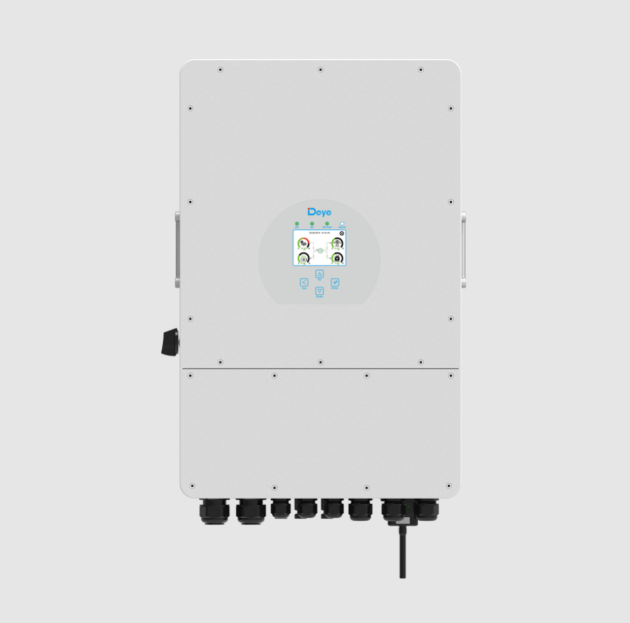As the world steadily moves toward renewable energy and more sophisticated electrical infrastructure, power conversion technologies are evolving to keep pace. One such innovation that plays a crucial role in modern energy systems is the 8KW three phase inverter. Designed for stability, scalability, and smart energy management, this inverter is an ideal fit for installations that go beyond basic household needs but fall short of industrial-scale systems.
This article breaks down what the 8KW three phase inverter does, how it’s used, and why it’s quickly becoming the preferred choice for many businesses, farms, and energy-intensive homes.
What Makes a Three Phase Inverter Different?
Inverter technology is essential for converting DC (Direct Current)—typically generated by solar panels—into AC (Alternating Current), the form of electricity used by most electrical devices. While single-phase inverters serve smaller loads well, they can't match the power handling and stability of a three-phase system.
A three phase inverter delivers power across three alternating lines, resulting in:
-
More consistent energy flow
-
Lower power losses
-
Better performance with high-demand equipment
An 8KW three phase inverter is capable of managing 8000 watts of load, which makes it a solid choice for mid-sized power systems that require efficiency and durability.
Key Technical Characteristics
A typical 8KW three phase inverter includes the following features:
-
Power Rating: 8000W (8 kilowatts)
-
AC Output: Three-phase, usually 400V or 380V
-
Input Voltage Range: 200V–1000V DC depending on model
-
MPPT Channels: Often 2 or more for optimizing solar input
-
Conversion Efficiency: Between 96% and 98%
-
Enclosure Rating: Usually IP65 or higher for outdoor installation
-
Cooling Method: Natural or fan-assisted cooling systems
-
Communication: Wi-Fi, RS485, or Ethernet for remote monitoring
-
Safety Protections: Overload, anti-islanding, over-temperature, surge protection
Common Use Cases for an 8KW Three Phase Inverter
1. Solar-Powered Businesses
Retail shops, service stations, and small offices can significantly cut down on grid reliance with an 8KW inverter connected to a rooftop solar system.
2. Agricultural Sites
Farms need dependable power for irrigation, storage, and lighting. An 8KW inverter handles these demands efficiently, especially when combined with batteries and solar panels in remote areas.
3. Manufacturing Workshops
Light industrial settings with welding machines, motors, and compressors benefit from the balanced power delivery and higher efficiency of three-phase systems.
4. Larger Homes
Residences with home theaters, EV chargers, pool systems, or electric heating need a strong inverter. The 8KW three-phase model ensures smooth power flow across all circuits.
Advantages of Choosing an 8KW Three Phase Inverter
✅ High Efficiency for Greater Energy Harvest
Three-phase inverters waste less power during conversion, making them ideal for solar setups where every kilowatt counts.
✅ Consistent and Stable Power
Balancing loads across three lines reduces flickering, voltage drops, and system stress—especially important for sensitive electronics.
✅ Scalable Design
Multiple 8KW inverters can be installed in parallel to create larger power systems as your energy demands grow.
✅ Smart Grid Compatibility
Many models support grid feedback, time-of-use tariffs, and remote monitoring—great for modern energy-aware consumers.
✅ Support for Battery Storage
Hybrid three-phase inverters can manage solar generation, battery charging/discharging, and grid input seamlessly.
Factors to Consider Before Installation
Before selecting an 8KW three phase inverter, assess the following:
-
System Voltage: Ensure your solar panel configuration matches the inverter’s input range.
-
Battery Integration: If you plan to store energy, choose a hybrid model.
-
Mounting Location: Outdoor units should be IP65 or higher for weather resistance.
-
Certification: Check for local compliance (CE, UL, IEC, etc.).
-
Monitoring: Choose a model with user-friendly software or apps for performance tracking.
-
After-Sales Service: Go for brands with accessible technical support and long warranties (typically 5–10 years).
Top Brands Offering 8KW Three Phase Inverters
Here are some of the leading names known for quality and performance in this category:
-
SMA (Germany) – Precision engineering and strong grid integration features.
-
Fronius (Austria) – Flexible configuration options and advanced monitoring.
-
GoodWe (China) – Competitive pricing with high-end features.
-
Growatt (China) – Popular in residential and small business installations.
-
Sungrow (China) – Highly efficient with strong support for battery systems.
-
Huawei (China) – Tech-forward inverters with AI-based optimization.
The Future of Mid-Sized Power Conversion
The energy industry is undergoing a transformation, and the 8KW three phase inverter is well-positioned for what’s ahead. As grid services become smarter and demand grows for self-sufficient energy systems, inverters are evolving to include:
-
Integrated EV charging support
-
Virtual power plant (VPP) readiness
-
AI-powered diagnostics and system optimization
-
Cybersecurity features for connected monitoring systems
-
Modular battery support for energy independence
Whether you’re designing a new solar installation or upgrading an existing one, future-ready inverters are the foundation of a resilient energy plan.
Conclusion: Is the 8KW Three Phase Inverter Right for You?
If you require a power solution that goes beyond basic household needs—without stepping into the realm of heavy industrial systems—then the 8KW three phase inverter is an excellent choice. With its ability to manage large loads, reduce power loss, and integrate with smart grids and storage, it offers flexibility, reliability, and efficiency.
